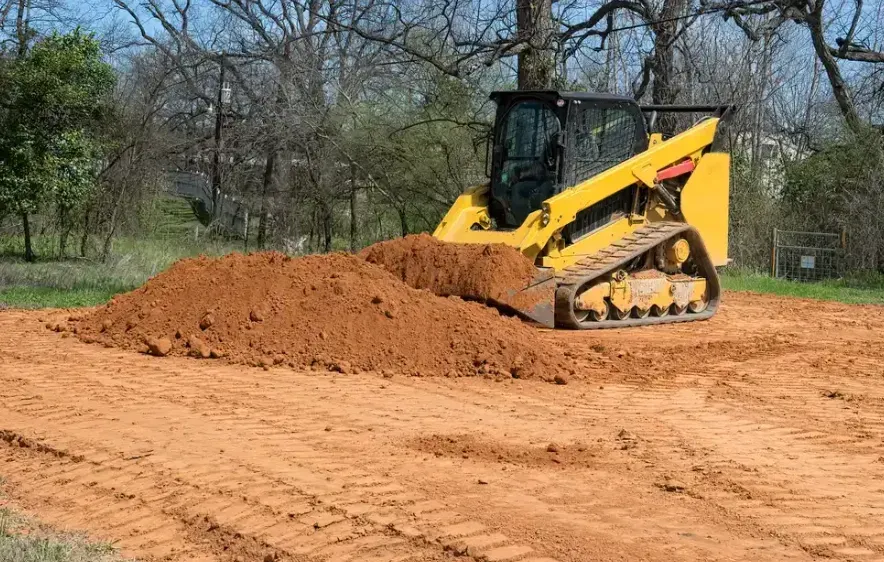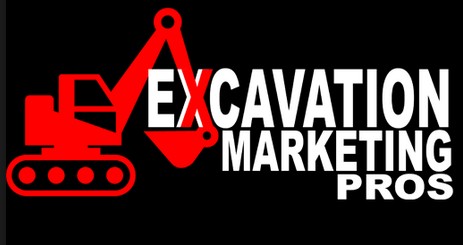
Avoid These Common Mistakes in Grading Near Muskegon | Ryerson Brothers Excavating
1. Why Grading Matters More Than Most People Think
If you’re a homeowner in Muskegon, or anywhere in Oceana, Ottawa, or Newaygo County, you might not think much about “grading” until something goes wrong—like water pooling in your yard, cracks in your foundation, or a driveway that keeps washing out.
But grading isn’t just pushing dirt around. It’s the groundwork—literally—that makes everything else on your property work the way it should. And if it’s done wrong? You’re not just left with a mess. You’re looking at costly repairs that could have been avoided.
2. The Homeowner’s Problem: Soggy Yards, Shifting Foundations, and Drainage Nightmares
We’ve worked with a lot of families across Muskegon County, and the story is almost always the same. You build a home. Or you add a shed. Maybe you’re putting in a driveway. But a few months later, you notice water isn’t draining right. There’s erosion. Maybe even some structural shifting.
Suddenly you’re asking:
"Was this avoidable? Did we miss something early on?"
Yes—and that “something” is often poor grading.
Grading isn’t glamorous, but it’s the thing that makes your home dry, your foundation stable, and your land usable. If you’re reading this, chances are you’re already dealing with grading issues or trying to avoid them altogether. Either way, we’ve got your back.
3. Mistake #1: Thinking All Dirt Work Is the Same
Let’s be honest—grading kind of looks like a bulldozer pushing dirt. So it’s easy to assume anyone with a machine can do it. But this is where a lot of problems start.
There’s a difference between “rough grading” (moving earth to a general shape) and “finish grading” (setting final elevations with proper slope for drainage). It’s not just how much dirt you move—it’s where it goes and why.
We’ve had to fix grading jobs done by landscapers, concrete guys, or even handymen who meant well but didn’t understand how subtle the slope needs to be. A backyard that looks flat to the eye might still need a precise 2% grade to move water away from the house.
4. Mistake #2: Ignoring Water Flow (Until It’s Too Late)
This is the big one. Improper grading often leads to one of the most frustrating problems we see: drainage failure.
When water doesn’t have a way out, it’ll find one. And it doesn’t care if that means through your crawlspace, around your foundation, or under your driveway.
We’ve seen:
Yards that turn to swamps every spring
Foundations cracking from saturated soil
Mold forming in basements
Driveways are crumbling from water runoff underneath
If your grading doesn't plan for where water should go, it's going to go where it wants. In Michigan, with our heavy snows and freeze-thaw cycles, this is a recipe for disaster.
5. Mistake #3: Not Grading to Code or Local Conditions
Every county has different requirements. And Muskegon, Ottawa, and Oceana all have their quirks when it comes to soil type, frost depth, and elevation changes.
If your grading plan doesn’t account for local codes or how your soil reacts to water, you’re going to run into inspection problems—or worse—erosion and sinkage.
For example, sandy soil in Oceana drains fast, which is great, but it’s also prone to shifting if not compacted right. Clay-heavy soil in other parts of Muskegon holds water like a sponge, which means you need steeper slopes or added drainage systems.
A one-size-fits-all grading approach just doesn’t work here. And sadly, we see that mistake made all the time.
6. Mistake #4: Skipping the Soil Check Before You Start
Let’s say you’re building a pole barn or prepping for a patio. Your contractor says, “Let’s get started,” and skips the boring part—testing the soil and checking what’s underneath.
That’s a mistake.
Before you even move a scoop of dirt, you need to understand:
How deep is the topsoil is
What’s below it (clay, sand, rock)
Whether the ground is stable enough to build on
How water behaves on your property after a good rain
We’ve had grading jobs where we discovered buried debris from decades ago—logs, bricks, even concrete chunks. You can’t grade effectively on top of something unstable. It’ll settle, shift, and sink. That’s why a good grading job always starts with investigating what’s below the surface.
7. Mistake #5: Hiring the Wrong Crew (Or Doing It Yourself)
We know YouTube makes everything look easy. But grading is not a weekend DIY project. And unfortunately, there are still a few outfits in West Michigan running around with a skid steer and no clue how to set grade.
If your grading contractor:
Doesn’t ask about drainage
Doesn’t use laser levels or transit tools
Can’t explain the slope percentage
Isn’t familiar with your local permit office
…you’re taking a big risk.
We’ve been called in more than once to redo a job someone else did cheaper. And let’s be honest—that “cheap” job usually costs more to fix than it would’ve cost to do right the first time.
8. What Proper Grading Looks Like in Muskegon and Nearby Counties
When grading is done right, it shows. Here’s what you should expect:
A gentle slope away from your home or structure (typically 5% for the first 10 feet)
Smooth, compacted soil with no soft spots or dips
Proper drainage paths, like swales, ditches, or French drains if needed
Soil stabilization techniques on slopes, especially in sandy areas
Everything is set up to pass inspection, because it’s done by someone who knows the code
Whether you’re in the hills of Newaygo or near the lakeshore in Muskegon, proper grading takes into account elevation, drainage, and use of the land. It’s not just about where the dirt ends up—it’s about where the water goes when the job is done.
9. How Ryerson Brothers Excavating Does It Differently
We’re not a big firm, and honestly, we like it that way. We stay small so we can stay precise. Every project we take on is customized to the land, the structure, and the way you plan to use your property.
If you call us about a grading project, we’re going to:
Walk the property with you
Ask about how water has behaved in the past
Check your soil conditions
Look at your long-term plans (building, landscaping, etc.)
Create a grading plan that’s built to last, not just look good
We’re local. We know what this land does when it rains, snows, or freezes. And we’ve learned how to work with it instead of against it.
10. A Simple Checklist Before You Hire Any Grading Contractor
Here’s what we tell friends and neighbors to ask before they hire anyone for grading:
✅ Do they understand local codes and permit requirements?
✅ Will they check drainage and water flow on your lot?
✅ Can they explain the grading slope and why it matters?
✅ Do they compact soil between passes, or just shape it?
✅ Will they walk you through the plan, not just drop a quote?
✅ Are they familiar with your type of soil and land use?
If they can’t answer these clearly—or don’t seem to care—keep looking.
11. Grading Is the First Step to a Solid Property
Most people don’t think about grading until it’s too late. But trust us—getting the slope, drainage, and soil right is the difference between a home that lasts and one that fights you every season.
If you’re building, renovating, or just want your yard to stop being a muddy mess, grading is where it starts.
And if you're near Muskegon, Ottawa, Oceana, or Newaygo—we’re here to help you get it right the first time.
